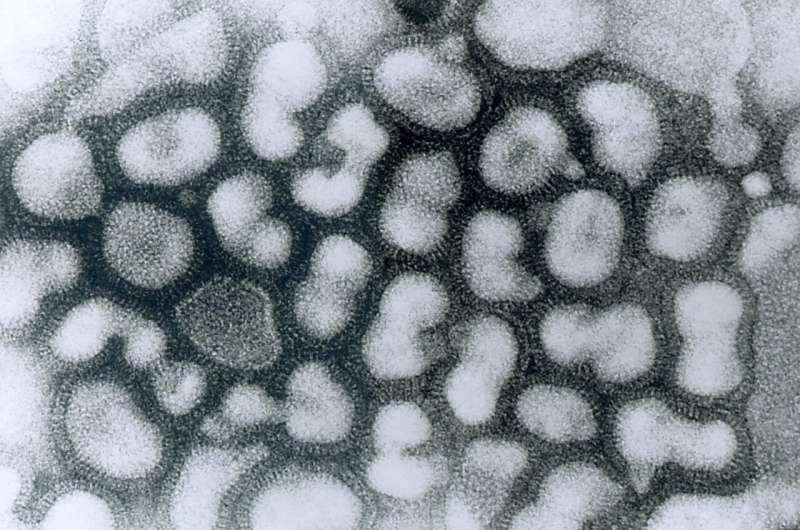Transmission electron micrograph of influenza A virus, late passage. Credit: CDC
Skoltech scientists discovered new patterns in the evolution of the influenza virus. This may help predict mutations in the viral genome and ultimately help design better vaccines. Research results were published in the top scientific journal PNAS.
While vaccines against many diseases remain effective for a long time, a flu shot needs to be done every year. One reason for this is that the influenza virus mutates quickly. Many of the mutations are useful for the virus as they change the amino acid sequence in its surface proteins, making the antibodies we produce after the previous vaccination or disease obsolete. As a result, every year scientists have to predict the way the virus might change by the next year and then develop the corresponding vaccine, most often a mixture of viral surface proteins that boost immunity.
Mutations accumulated by the virus are not completely random, making evolution partially predictable. Due to natural selection, mutations useful for the virus spread more often than those harmful for it. Therefore, it is crucial to understand selection to predict evolution.
A group of Scientists from Skoltech, the Central Research Institute of Epidemiology and other scientific organizations led by Skoltech Professor Georgii Bazykin described a new pattern of change in amino acid sequences of influenza virus surface proteins. Using methods of bioinformatics, the researchers found that the chances of an amino acid variant to get substituted increase with time since its origin—a pattern they termed "senescence." This process complicates viral evolution, and accounting for it may improve vaccine strain choice.
"The existing models are based on the assumption that the virus evolution is something like moving along a hilly plain, where the altitude above the sea level is the viral fitness, i.e., how effectively it can infect the host," says Georgii Bazykin. "We observe that the landscape is more like a stormy sea surface. The viral evolution resembles the movement of a surfer who has to stay on the top of the wave which escapes from beneath his feet and has to keep moving not to drown. The existing models try to predict the movements of the surfer, but it is difficult to do it without understanding that it is the wave that moves."
More information: Anfisa V. Popova et al, Allele-specific nonstationarity in evolution of influenza A virus surface proteins, Proceedings of the National Academy of Sciences (2019). DOI: 10.1073/pnas.1904246116
Journal information: Proceedings of the National Academy of Sciences
Provided by Skolkovo Institute of Science and Technology























